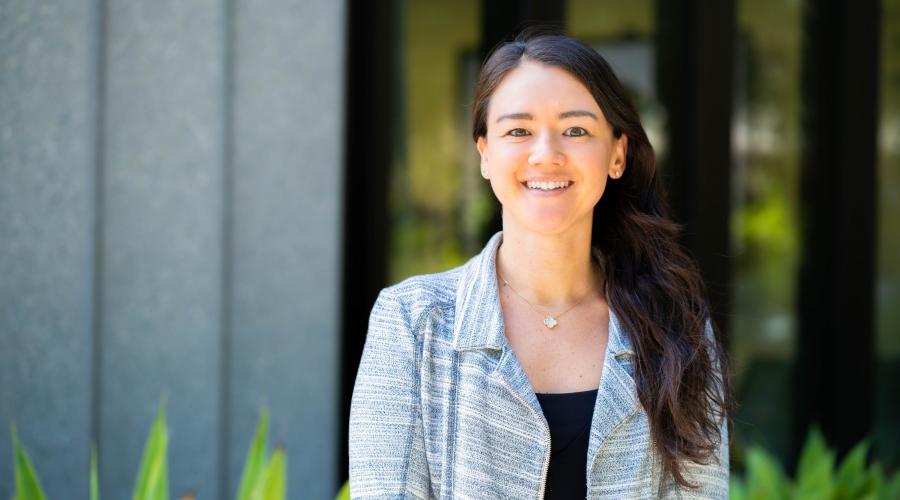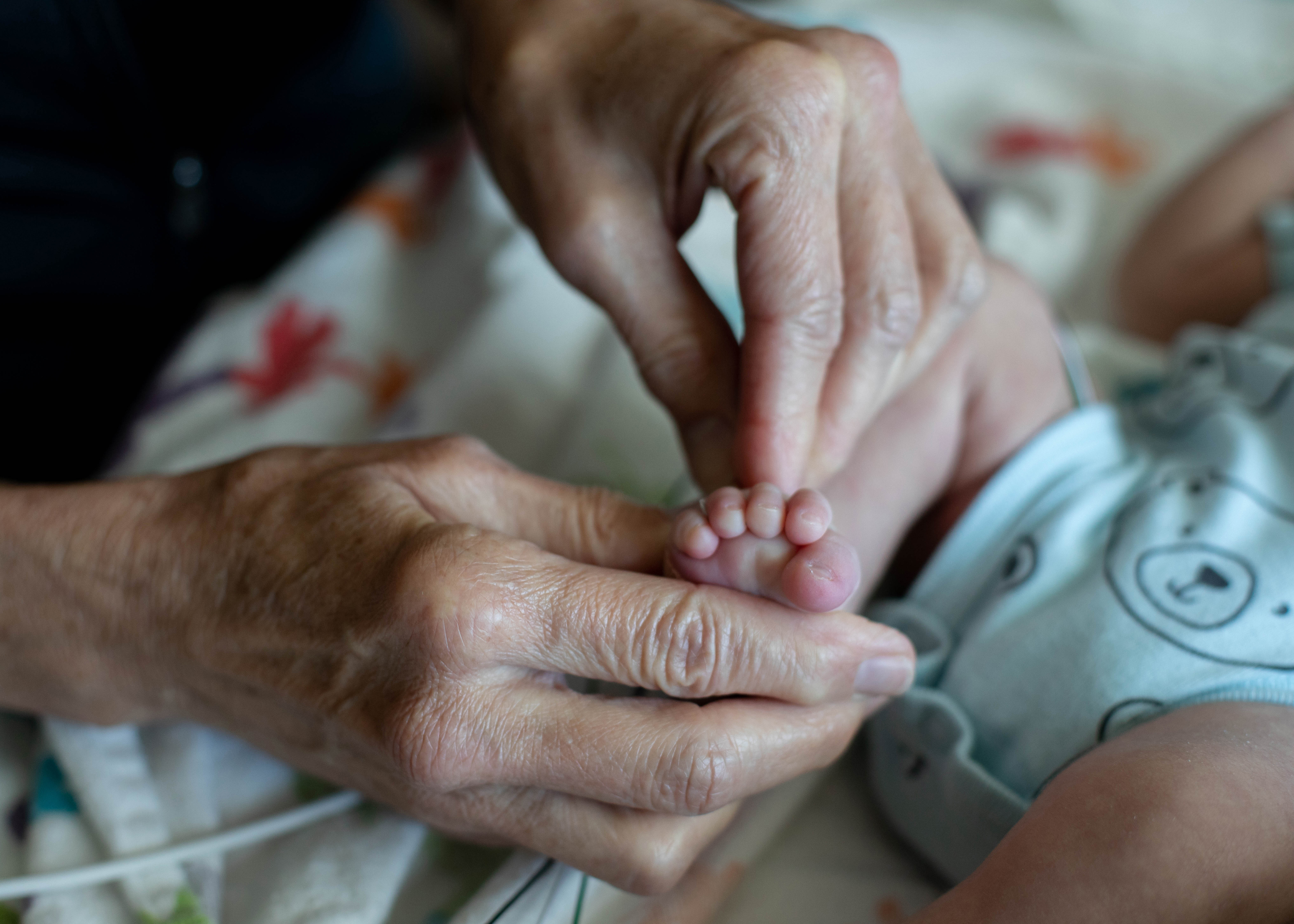
Giving Fragile Newborns a Stronger Start: Dr. Stephanie Tsoi’s Research in Pediatric Critical Care
When a baby is born, one of the most important changes in their body is learning how to breathe on their own. But for some newborns, that transition doesn’t go smoothly. A condition called persistent pulmonary hypertension of the newborn (PPHN) makes it hard for oxygen to reach their tiny organs—and it can be life-threatening.
Dr. Stephanie Tsoi, a fellow in the Division of Critical Care with the UCSF Department of Pediatrics, is working to give these vulnerable babies a fighting chance.
In the Q&A that follows, Dr. Tsoi shares what inspired her to pursue this critical research, how her work could improve outcomes for newborns with PPHN, and what gives her hope for the future.
What drew you to the UCSF fellowship program in pediatric critical care? What stood out to you most?
I was drawn to UCSF because of the incredible diversity of patients we care for across our two intensive care units—the Pediatric Intensive Care Units at Mission Bay and Oakland. We see everything from trauma cases to children with complex heart conditions, bone marrow transplants, and pulmonary hypertension. This variety offers a rich and challenging learning environment.
Another highlight is our specialized cardiac ICU, where we have access to advanced life-saving techniques like extracorporeal cardiopulmonary resuscitation (ECPR). That kind of hands-on experience is invaluable.
Just as important, the program emphasizes both clinical excellence and research. We’re encouraged to develop strong research skills and are supported by incredible mentors who are leaders in their fields.
What initially sparked your interest in pulmonary hypertension (PH), and what are the goals of your research?
I was initially most interested by the physiology of PH, as these kids can present with such severe critical illness but improve with the right diagnostics and therapies to live a quality life at home. Managing these cases at their most severe presentations requires a highly trained, collaborative care team—something I’ve had the privilege to be part of and learn from at UCSF.
Although there remains no cure for PH, our understanding of the disease has changed drastically in the last few decades by pioneers in the field, many of whom are here at UCSF. Seeing how this research translates from bench to bedside is incredible, so helping to care for these children solidified my interest in contributing through PH research.
There’s still so much we don’t know; that gives me the opportunity to ask new questions and help improve care for future patients.
One area I’ve become especially passionate about is persistent pulmonary hypertension of the newborn (PPHN), a type of PH that affects babies shortly after birth. I’m interested in how prenatal exposures or insults can influence health outcomes later in life, a hypothesis known as the Developmental Origins of Health and Disease.

How could understanding the typical course of PPHN improve care and help families?
Knowing what a typical recovery looks like for babies with PPHN helps care teams recognize when something isn’t following the expected path. That’s when we know it’s time to look deeper—using advanced imaging, genetic testing, or other specialized tools—to uncover possible underlying causes.
For families, this knowledge is just as important. When parents are suddenly faced with a life-threatening diagnosis in their newborn, setting realistic expectations can help ease their anxiety during an incredibly stressful time. We can better explain how long their child might need support like mechanical ventilation or continuous medications, and how long they might be in the neonatal ICU.
One thing I love about training at UCSF is that, as a center of excellence, we treat a large and diverse group of patients. That gives us the ability to ask big, important research questions and develop data that can truly impact care across the country. PPHN affects babies everywhere—it doesn’t discriminate by geography or background—so the insights we gain here can have a wide-reaching impact.
Your recent case report focused on a patient with a novel TBX4 gene mutation. What does this case teach us about the complexity of PPHN?
This case really highlighted why understanding the typical course of PPHN is so important. When a baby doesn’t recover as expected, hidden genetic factors may be at play. This case helped inspire my current research to better define the typical course of PPHN, so we can more easily spot when something is off.
It also raised bigger questions about how PPHN and PH might be connected over a child’s lifetime. Could certain babies with PPHN be at higher risk of developing PH later in life? That’s the question I’m exploring now—so stay tuned!
How have your mentors at UCSF supported your growth as a researcher and clinician?
I’ve been incredibly fortunate to receive mentorship through a Multidisciplinary Pediatric Pulmonary Vascular Disease T32 Grant Program, which gave me dedicated time and resources to focus on my research. Drs. Jeff Fineman, Roberta Keller, and Martina Steurer have all played pivotal roles in my development as both a researcher and a clinician.
I also had the opportunity to complete the Advanced Training in Clinical Research (ATCR) program, which helped me build strong, long-term research skills. And through the FAST-CAR program, led by Dr. Jonathan Singer, I received seed funding and participated in leadership and professional development workshops.
Their mentorship has shaped not only the research I’m doing today, but also the kind of physician and scientist I aspire to become.
Dr. Tsoi’s work exemplifies the UCSF Department of Pediatrics’ commitment to advancing research, improving clinical care, and training the next generation of physician-scientists. Through innovative studies and compassionate care, she’s helping shape a brighter future for the most vulnerable patients.
To learn more about our pediatric critical care fellowship program and the groundbreaking research happening at UCSF, visit our Division of Pediatric Critical Care website.
